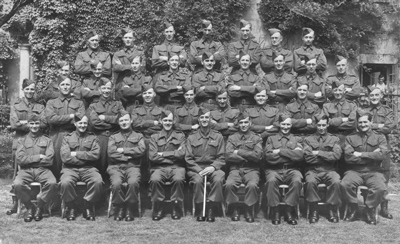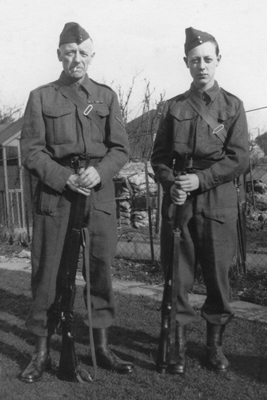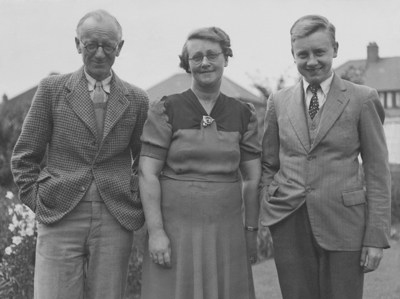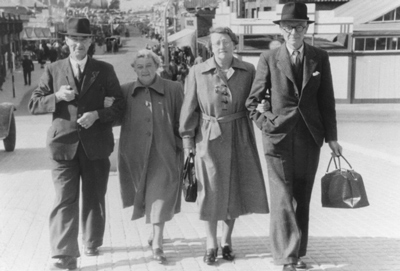The threat of war overshadowed the last years of the 1930s and on Saturday 2
nd September 1939 he received a letter from Rex Silver to say that if war was declared the studio would close immediately. The Second World War started the next day. The studio did not close, but that weekend Lewis was told by a neighbour that there were vacancies at Watford Electric and Manufacturing Company (WEMCO), which manufactured switchgear for the Royal Navy. He started on the Monday and was the stores manager there until the end of the war.
At WEMCO he had two assistants, and many fellow workers, so it was a complete change from the life he had known for the previous twenty years at Silver Studios where he said he had "lived each working day like a Cistercian monk". After the war he told his family that, when the threat of invasion was greatest, all top secret plans were copied and sent to the USA. He was the courier for WEMCO and delivered their plans to a government agent at a 'special meeting place'. Whilst he was at WEMCO he was also an aircraft spotter on the roof of their building whenever there was an air raid.
In June 1940, after Dunkirk, Lewis Jones joined the Local Defence Volunteers (LDV) which became the Home Guard. He was a member of B Company 10
th Battalion Home Guard. In the event of an invasion he would have taken the Lewis Gun and its drum magazines from the bedroom wardrobe at his home and established a machine gun position. This position was to be in the public house in the St Albans Road, Watford, on the railway bridge where a footpath led to Watford Junction Station. Lewis was an excellent shot and in a competition at Bisley only just lost to a sergeant of the King's Own Scottish Borderers. His son, Robert, remembers "the final decision between them was made when they repeatedly fired one round at a time, and scored bull after bull until Dad scored an inner and was eliminated".
During the war the spare room at 74 Bushey Mill Crescent was let out to conscripted women working in aircraft production in North Watford, and others replacing the men who had been called up.
Late in the war a V1 hit Sandringham Road and the British Moulded Hose Company, causing numerous casualties. Lewis attended the site to offer first aid, and was later visited by Dr T Wood who wanted to show Lewis the medal that he had received and thought that Lewis should have got. Dr Wood said "you were giving aid to the wounded and dying before I got there".

|
Watford Home Guard, 1941.
Lewis Jones is in the 2nd row from front and 2nd from right. Robert, his son, is 2nd from right in the row behind Lewis Jones.
|




